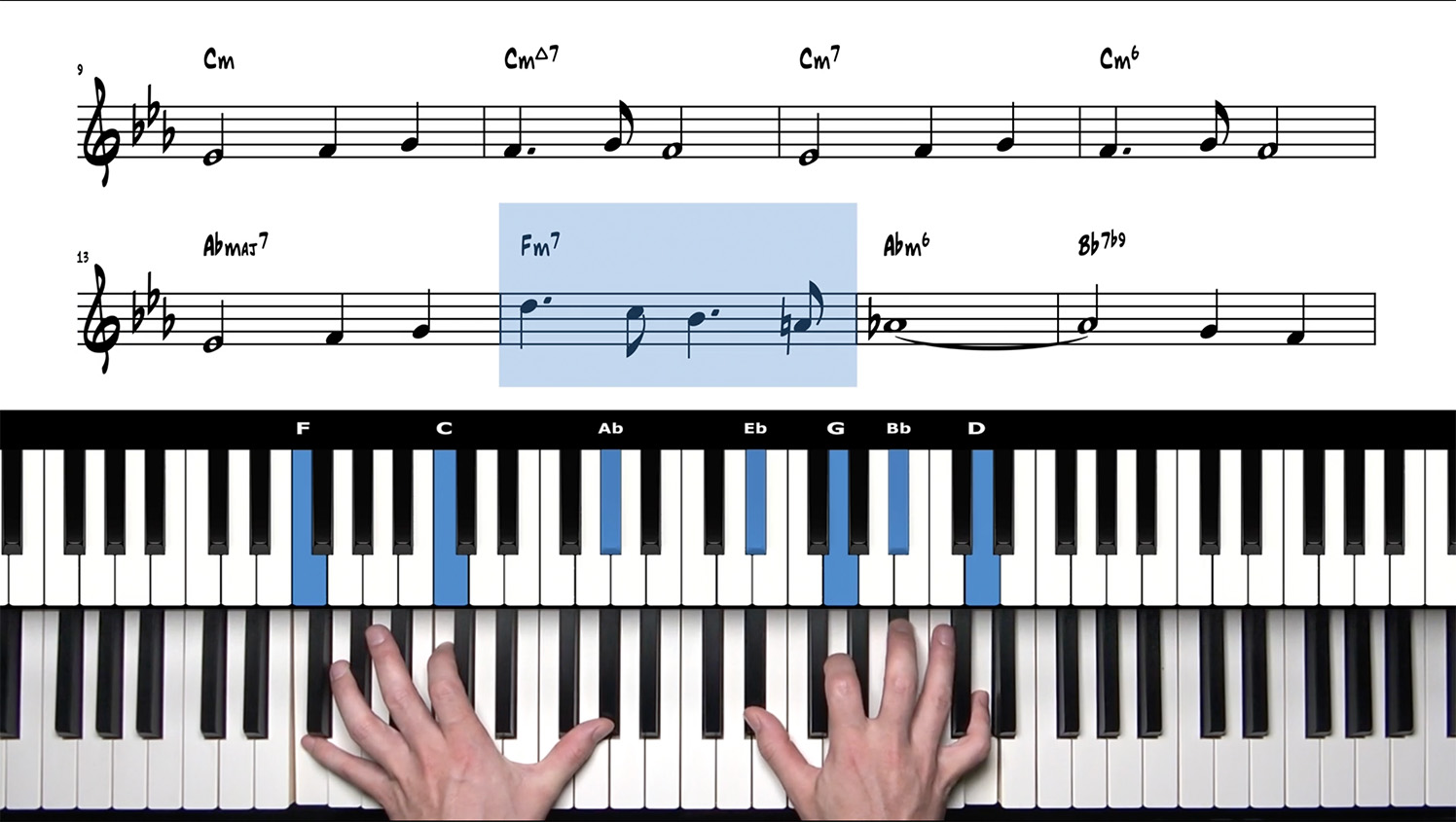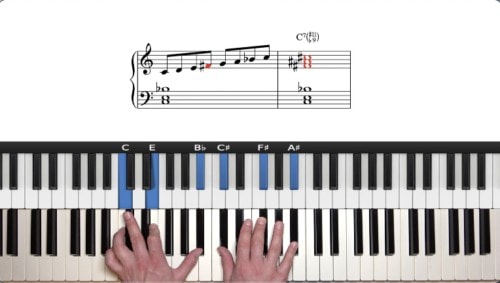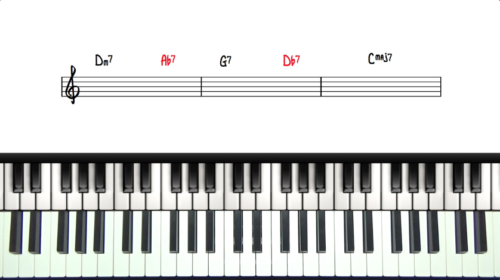My Funny Valentine – Solo Jazz Piano Masterclass
Welcome to this in-depth masterclass on the jazz standard “My Funny Valentine.” In this lesson we explore the tune from start to finish, focusing on creating a sophisticated, balanced, and professional arrangement using spread voicings, chord extensions, and tasteful melodic phrasing.
Form & Structure
“My Funny Valentine” follows an A A B C form. There are two A sections, each eight bars long, followed by a B section or bridge which is also eight bars in length and modulates to the relative major. The C section is twelve bars long, which makes it a little unusual compared to the other sections.
The Opening Sequence – C Minor Variations
The first four bars are built entirely on C minor harmony, but with subtle changes in quality each bar.
The progression moves from a C minor triad, to C minor maj7, to C-7, and finally to C-6. Each shift brings a new colour, and placing the major 7th in the bass allows for a descending chromatic bass line that moves naturally into Abmaj7 in bar five:
This small detail creates a smoother, more connected transition between chords.
2-Handed Spread Voicings
Root position 7th chords often sound too dense and dimensional for solo jazz piano. Instead, we split chord tones between the hands to create 2-handed spread voicings. A useful formula is:
- Left hand: Root & 5th
- Right hand: 3rd & 7th (plus melody)
This creates a balanced, resonant texture and creates space to add chord extensions and to allow the melody to sing on top of the voicing.
Melodic Phrasing & Interpretation
One of the joys of playing jazz standards is the flexibility of the melody. Instead of following the lead sheet exactly, you can adjust the phrasing to suit your interpretation. This may involve stretching or condensing rhythms, delaying the entrance of a melody note for dramatic effect, or adding small embellishments such as passing tones and turns.
Listening to a variety of vocal performances of “My Funny Valentine” is one of the best ways to develop a personal phrasing style and alternate ways to play the melody.
Adding Color with Extensions & Alterations
A simple way to enrich the harmony is by adding chord extensions. From Abmaj7, including the 9th creates extra warmth without clashing with the melody. F-7 chords can be voiced as F-9 or F-11 for a more spacious sound. The D-7b5 chord can be enhanced with the 11th for a lighter texture, and the G7 chord can be altered with b9, #9, or #5 to add tension before resolving.
The key is to place these extensions carefully so they support, rather than compete with, the melody line.
The Bridge – Modulation to the Relative Major
The B section modulates to Eb major, offering a brighter sound in contrast with the A Sections. This creates a ‘bittersweet’ effect and interestingly the tune also ends on the relative major chord.
Spread voicings remain the foundation in the B Section, but here we:
- Add the 9th into our voicings for extra texture.
- Apply upper structure triads to the G7 chord.
- Employ chromatic passing chords to enhance the harmony.
The C Section & Climax
The C section begins in a similar way to the A sections but soon rises to the highest melodic point of the entire piece, creating the emotional climax. From there, a series of descending ii–V progressions lead back to Abmaj7.
The tune resolves in an unexpected way, finishing on Eb6, the relative major of the home key. This gentle ending can be used as a final cadence, or as a way to cycle back into the beginning of the piece for another chorus.
Lesson Downloads
-
My Funny Valentine – Worksheet File Type: pdf
Practice Tips
-
Master the Bass Line Movement – Practice the chromatic descent from C minor triad → Cmin(maj7) → C-7 → C-6 leading into Abmaj7.
-
Work Spread Voicings Slowly – Split root & 5th (LH) from 3rd & 7th (RH) and add melody once the shapes are secure.
-
Experiment with Phrasing – Delay melody entries, add turns, and vary note lengths to avoid mechanical playing.
-
Add Extensions Strategically – Place 9ths, 11ths, and altered tones where they enrich rather than clash with the melody.
- Cycle Through the Bridge Changes – Loop Ebmaj7 → F-7 → G-7#5 → F-7, focusing on smooth voice leading and balanced tone.








